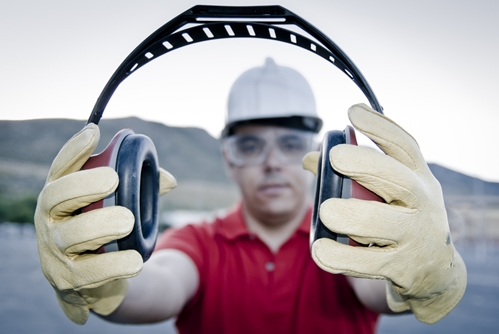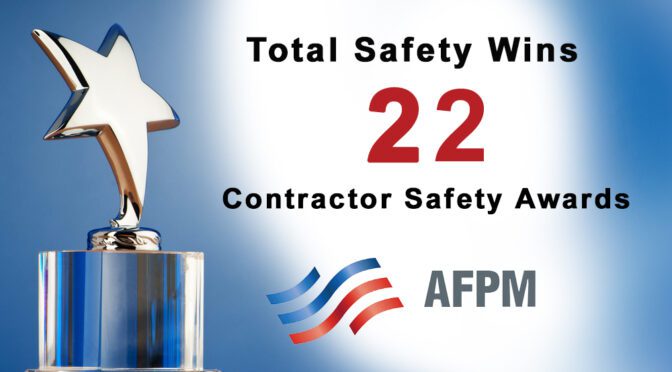
Safety equipment is designed to protect workers from a great variety of hazards. When thinking of injuries that can occur in the workplace, we might not think of the importance of hearing protection.
Risks of Hearing Loss in the Workplace
According to the National Institute for Occupational Safety and Health, approximately 22 million U.S. workers are exposed yearly to hazardous noise levels while at work. Hearing loss disability also results in an estimated $242 million in workers’ compensation payments each year. All told, that makes hearing loss one of the most common work-related illnesses in the U.S.
In a study released in August, NIOSH found 17 percent of U.S. workers who have been exposed to noise on the job went on to experience hearing difficulty. Additionally, another 15 percent have experienced tinnitus, the sensation of ringing or buzzing in one or both ears even when no source of sound is present. Nine percent of workers experience both these conditions.
“Hearing loss can greatly impact a worker’s overall health and well-being,” NIOSH Director Dr. John Howard, said in a statement. Howard added that hazardous levels of occupational noise exposure should be avoided to prevent hearing damage.
As Safety + Health magazine reported, that an estimated 1.1 billion young people worldwide are at risk of hearing loss because of unsafe listening practices. This means more workers will enter employment with existing hearing loss. Hearing loss in the workplace can present safety risks if workers are unable to hear alarms or critical communications from other workers.
According to the NIOSH study, workers in certain sectors face greater risk of hearing damage than others. For example, workers in the manufacturing industry had a significantly higher risk for both tinnitus and co-occurrence of tinnitus and hearing difficulty. The mining sector was found to have the highest frequency for hazardous noise exposure of any industry.
What are the OSHA Decibel Limits?
The Occupational Safety and Health Administration sets limits on how many decibels of noise workers can be exposed to based on a weighted average over an 8-hour day. OSHA’s permissible exposure limit is 90 A-weighted decibels (dBA) for 8 hours. However, if the noise level increases by 5 dBA, the amount of time the worker can be exposed to the noise level is reduced by 50 percent. For example, while a worker can be exposed to 87 dBA for 8 hours, if the noise level increases to 92 dBA, the worker can only be around the noise source for 4 hours. To illustrate, the noise of a heavy truck comes in between 85-90 dBA, while a jackhammer will measure between 90-100 dBA.
While these are general guidelines, there are several warning signs that noise is exceeding safe levels for an individual worker. These include:
- Hearing ringing or humming at the end of the workday
- Not being able to hear another worker speak at a conversational level from an arm’s length away
- Experiencing temporary hearing loss at any point
Hearing Protection Safety Tips
Hearing loss is one of the most common work-related illnesses in the U.S., according to NIOSH. If workers must be exposed to high noise volumes in order to complete their tasks, OSHA recommends several different methods for preventing permanent hearing damage:
- One method is to utilize engineering controls to reduce noise levels either at the source or by buffering the sound. This may involve utilizing low-noise tools and machinery, properly maintaining or lubricating equipment, enclosing the noise source, or installing sound walls or curtains.
- Employers may also utilize administrative controls to lessen the impact of noise in the work environment. Examples include limiting the amount of time an individual worker spends near a loud noise source, and providing quiet environments, such as soundproof rooms, where workers can recover from noise exposure.
- In addition to all the above, employers can provide workers with hearing protection devices, such as earmuffs and earplugs.
What is a Hearing Conservation Program?
OSHA requires employers to implement an effective hearing conservation program in any industries where noise exposure is equal to or greater than 85 dBA for an 8-hour period, with the exception of the construction industry where the exposure limit is set at 90 dBA for an 8-hour period. This program includes training workers to recognize hazardous noise exposure, fitting them for noise protection equipment, and creating and maintaining an audiometric hearing test program.
One of the most critical steps of a successful hearing protection program is regular monitoring of noise levels to detect and adapt to changes. We now have technology that can monitor worker exposure to noise so employers can be proactive at protecting their workers. It is important to have a hearing protection program in place to motivate workers to care for their hearing health.
Types of Hearing Protection
- Foam Earplugs – Foam earplugs are probably the most popular type of hearing protection. These earplugs are made of a formable/moldable foam material that’s designed to expand and conform to the unique shape of each person’s ear canal.
- Reusable Earplugs – Pre-molded, reusable earplugs are made from silicone, plastic, or rubber. One type of pre-molded earplug is high-fidelity (hi-fi) earplugs, also called uniform-attenuation earplugs. They have the same effect as turning down the volume on a stereo.
- Protective Earmuffs – Earmuffs are padded plastic with soft ear cushions joined by an adjustable headband to completely cover the outer ear. Different models help ensure proper fit and function, including options with electronic components to help users communicate.
Hearing Protection Solutions with Total Safety
Total Safety offers solutions for hearing conservation including the best hearing protection products, fit testing, and programs. Contact one of our safety experts today to learn about the hearing protection solutions that Total Safety can provide.






 Keep fire extinguishers close to areas where workers may be at risk for fire hazards, such as welding work stations.
Keep fire extinguishers close to areas where workers may be at risk for fire hazards, such as welding work stations.
 Workers who complete their tasks in isolation face the additional hazard of being unable to ask another work for assistance in an emergency.
Workers who complete their tasks in isolation face the additional hazard of being unable to ask another work for assistance in an emergency.


 Eye protection is a vital consideration in nearly all industries.
Eye protection is a vital consideration in nearly all industries.





